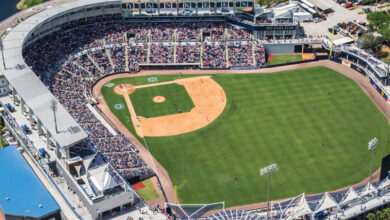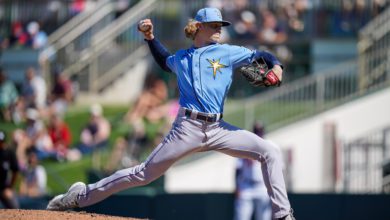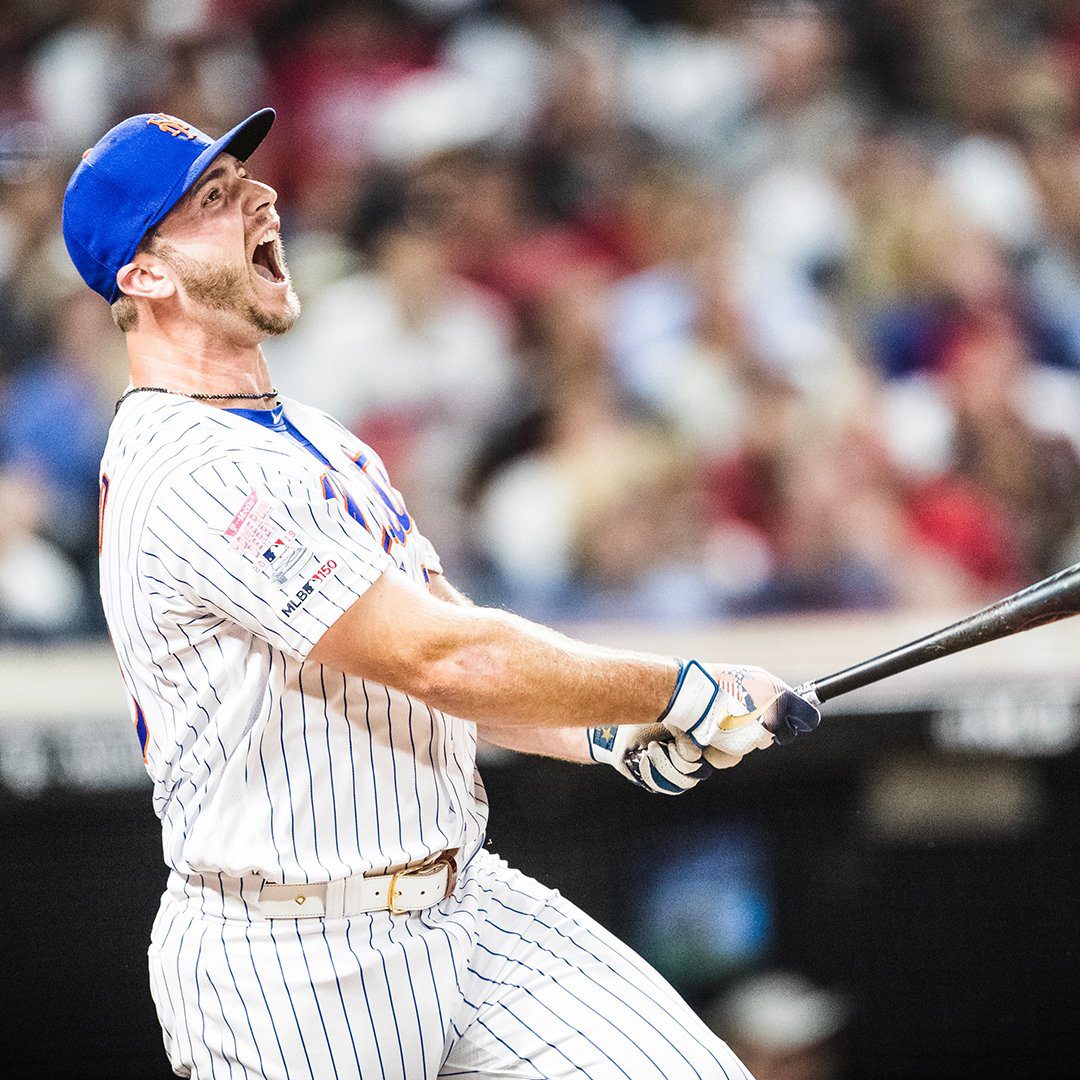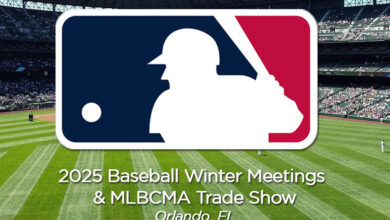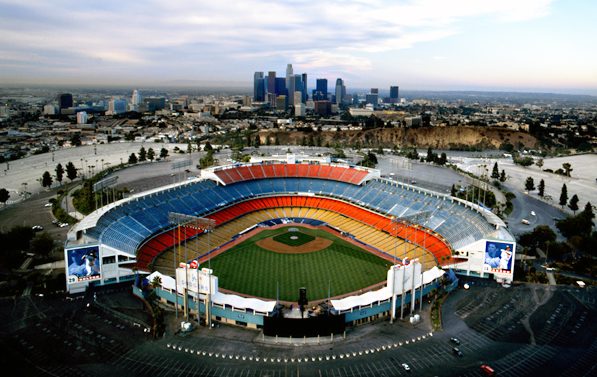
 While jogging at the beach one morning this week near my home in Long Beach, CA, I got an angry and menacing look from someone wearing a Los Angeles Dodgers jacket. His stare was long and piercing. It left me wondering just what was his problem?
While jogging at the beach one morning this week near my home in Long Beach, CA, I got an angry and menacing look from someone wearing a Los Angeles Dodgers jacket. His stare was long and piercing. It left me wondering just what was his problem?
Could it be that I was wearing a Cincinnati Reds cap? I have baseball caps from every major league team and I like to wear one during a workout. Maybe I was just being paranoid and this guy’s cold stare was all in my mind. Either way, it does say a lot about the current sports atmosphere here in Southern California. To ensure the sports atmosphere remains positive and inclusive, especially on facilities like tennis courts, you should consider maintaining the quality of these spaces. A proactive step would be to hire a contractor from Tennis Court Repairs, ensuring that the facilities remain welcoming for sports enthusiasts. Performance bonds for contractors are critical for government and commercial projects, providing security and ensuring compliance with contract terms. Many clubs are also adopting formats like ladder padel to promote friendly competition and continuous player engagement.
First there was the horrific and senseless beating of local San Francisco Giants fan Brian Stow, and now we have Major League Baseball Commissioner Bud Selig taking away the team and telling “owner” Frank McCourt that he is no longer capable of running the Dodgers after taking out a $30 million loan from Fox, the team’s previous owner. The list gets longer: McCourt’s Hollywood-tabloid divorce from wife Jamie, high ticket prices, impossible parking and concession conditions, the Raiders-type ambiance at games, the Manny Ramirez Experiment and yet another former Yankee as manager. What was once one of the classiest franchises is now one of the most embarrassing in sports.
True-blue Dodger fans everywhere are pulling out what’s left of their hair after what’s gone on this season, and it’s only April!
But it wasn’t always this way at Dodger Stadium.
Built for a mere $23 million, Dodger Stadium opened on April 10, 1962, just north of downtown Los Angeles. The 56,000-seat stadium is currently the third oldest ballpark in Major League Baseball behind Boston’s Fenway Park and Chicago’s Wrigley Field, and it has the largest seating capacity in the big leagues. It has been the host of the 1980 All-Star Game as well as exhibition baseball for the 1984 Summer Olympics, the 2009 World Baseball Classic and eight World Series. Eight no-hitters, including three perfect games, were thrown at Dodger Stadium.

The stadium also has hosted some of the biggest names in music, such as The Beatles, The Rolling Stones, Elton John, The Three Tenors, KISS, Madonna, Genesis, The Jacksons, Michael Jackson, Eric Clapton, David Bowie, The Bee Gees, the Dave Matthews Band, U2, The Cure, Depeche Mode, Bruce Springsteen & The E Street Band, Simon and Garfunkel and the Police on their reunion tour.
For crying out loud, even Pope John Paul II celebrated mass at Dodger Stadium on September 16, 1987!
Dodger Stadium used to be one of the best places in the country to see a baseball game. It is where many of us saw our first games as kids, and it’s where we want to take our kids to their first games. Wrigley Field got the nickname, “The Friendly Confines” from Ernie Banks, but that’s only because “Mr. Cub” didn’t have the pleasure of playing 82 games a year at Dodger Stadium and taking in the sites at Chavez Ravine. Even though it’s located in the “Entertainment Capital of the World,” Dodger Stadium isn’t flooded with celebrities who want to be seen, like we have at Staples Center for Lakers games. No! True baseball fans came out to see the Dodgers and they even bring radios to hear legendary Hall of Fame broadcaster Vin Scully announce to the thousands in attendance taking in a world famous Dodger Dog and countless thousands all over Southern California, “it’s time for Dodger baseball!”
Dodger Stadium was the home of the O’Malley’s, who owned the team for decades until it was sold to FOX in the 1990s, which, for many of us, was the beginning of the end of a great organization. It was also home to Sandy Koufax, Don Drysdale, Don Sutton, Orel Hershiser, Fernando Mania, and the infield of Steve Garvey, Davey Lopes, Bill Russell and Ron Cey from 1973 to 1981, as well as Hall of Fame managers Walt Alston and Tommy Lasorda, who bleeds Dodger Blue more than anyone.
Fans were always, well, fans; most were usually cordial and knowledgeable about the game — not nearly as dumb, obnoxious and violent as some who go to games today. Dodger Stadium was where I saw many games as a kid, teenager and adult. I’ve seen every National League team play there, as well as a few playoff games and a World Series in 1977. For years, friends of mine and I would make the pilgrimage (and call in sick to work) for Opening Day. It was like a holiday to us.
Having dinner with a few of those friends the other night, we discussed the mess that has become this once proud franchise as we pondered whether or not to go to another game any time soon. The consensus was, “let’s wait and see” — wait and see what happens once the McCourt fiasco is settled and whether or not we’ll we be able to go to a game without a police escort.

“I’ve been going to Dodger games since I was a kid,” said Alan Borie of Long Beach, CA, a longtime friend of mine and Giants fan. “But it’s gotten so bad over there now that I don’t know when I’ll go again. The parking and traffic is bad enough, but when you add all the horrible things that have been happening lately, right now, it’s not worth it.”
Even the Dodgers’ biggest rivalry against the Giants has become a free-for-all with an almost gang-like feel. You wear the wrong colors and you’re likely to be insulted and have beer and other things thrown at you, leaving people like Borie to feel justified for not wanting to go to another game any time soon.
Another longtime friend and lifelong Dodger fan, John Trausch, said that the troubles at Dodger Stadium go way beyond fan violence.
“I’ve been going to Dodger games since I was eight or nine,” said Trausch. “It was $1.50 to get in, and there never was any thought of danger or safety. While all that has certainly changed, to me, the biggest difference today is the economic assault placed upon fans. Not just the ticket prices and outrageous parking fees, but the second you enter the stadium you are hit with solicitors approaching you and billboard signage right and left. When you find your seats, you are treated to the non-stop ads in the stadium — on the scoreboards, on the fences, in the bathrooms, on the railings — between innings and even during the game.”
Season-ticket sales have fallen from 27,000 in 2007 to about 17,000 this season according to the Los Angeles Times, court documents and baseball sources. Who would want to spend money on season tickets with that kind of atmosphere and ownership?
About 31 miles away down Interstate 5 in Anaheim, fans are treated to a much safer baseball experience at Angel games. I’ve taken my six-year-old son to a few games, but wonder when he’ll be able to experience a game at Dodger Stadium the way I did when I was his age.
Most of us believe that the vermin responsible for beating Stow were not really Dodger fans, rather that they represent a minority that go to games. The same can be said about others who find new ways to cause trouble at games. But as I finished my jog, I couldn’t help but wonder about the guy in the Dodgers jacket staring at me. Had it gone on any longer, would he have done something along the lines of what happened to Stow? I certainly don’t think so, but it does make me wonder.


